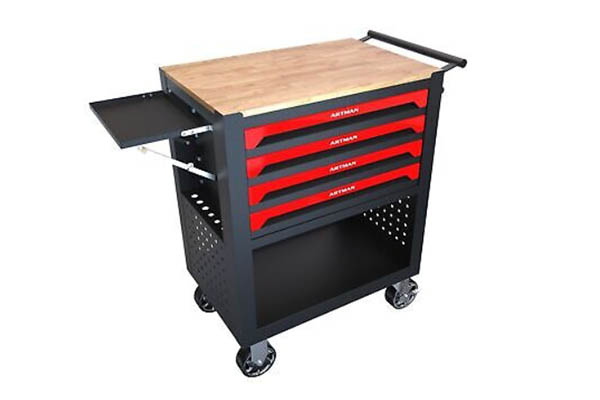Toolboxes are essential for professionals and hobbyists alike, providing a secure and organized way to store tools and equipment. However, one of the common issues with toolboxes, particularly those with drawers, is maintaining their structural stability. Over time, repeated use, heavy loads, and environmental factors can compromise the durability and functionality of toolbox drawers. So, how can one enhance the structural stability of toolbox drawers? Here are some effective strategies.
1. Use High-Quality Materials
The foundation of any durable toolbox is the materials used in its construction. For drawers, opting for high-quality materials is crucial. Steel is often the material of choice for professional-grade toolboxes due to its strength and resistance to wear and tear. However, there are varying grades of steel, and choosing a thicker gauge can significantly enhance durability. Stainless steel or cold-rolled steel is ideal for withstanding heavy use and preventing dents or warping.
For those who prefer lighter materials, aluminum is a good alternative. Although not as strong as steel, aluminum is resistant to corrosion and can be engineered for strength with reinforced designs.
2. Reinforce Drawer Bottoms
One of the weakest points of toolbox drawers is often the bottom panel, especially when heavy tools are stored. Overloading can cause the bottom to sag or even break over time. To enhance the stability of drawer bottoms, consider adding additional support.
Reinforcing the bottom with metal strips or wooden slats can distribute the weight more evenly and prevent sagging. Another effective solution is to use thicker, more durable materials for the drawer bottoms, such as plywood or metal sheeting, instead of thin particle board or plastic.
3. Upgrade Slide Mechanisms
The slide mechanisms of toolbox drawers are integral to their functionality and stability. Many toolboxes come with basic slide rails that may not hold up well under heavy loads or frequent use. Upgrading to ball-bearing slides can make a significant difference.
Ball-bearing slides provide smoother operation and better support, allowing drawers to handle more weight without sticking or bending. They also reduce friction, which minimizes wear and tear on both the slides and the drawer itself. For heavy-duty applications, consider using industrial-grade slides that are designed to support heavier weights.
4. Implement Proper Weight Distribution
Properly distributing the weight of tools and equipment inside the drawers can greatly enhance stability. Heavy items should be stored in the lower drawers to lower the center of gravity, reducing the risk of the toolbox tipping over. Lighter tools and accessories can be placed in the upper drawers.
Additionally, organizing tools so that weight is evenly distributed across the drawer prevents one side from bearing more load than the other. Using dividers or organizers within the drawers can help keep tools in place and maintain balanced weight distribution.
5. Secure Drawers with Locks and Latches
Toolbox drawers that open unexpectedly can lead to instability and accidents. Installing locks and latches on drawers can prevent them from sliding open when moving the toolbox or during transport. This not only enhances safety but also adds to the structural integrity of the toolbox by keeping the drawers securely in place.
Many modern toolboxes come with integrated locking systems, but aftermarket locks and latches can also be added to existing toolboxes for an extra layer of security.
6. Regular Maintenance and Inspection
Regular maintenance and inspection are key to prolonging the life and stability of toolbox drawers. Periodically checking for loose screws, worn-out slides, and damaged materials can help identify potential issues before they become serious problems. Lubricating the slide mechanisms and cleaning out dust and debris from the drawers can also enhance performance and extend the life of the toolbox.
Conclusion
Enhancing the structural stability of toolbox drawers is essential for both safety and functionality. By using high-quality materials, reinforcing weak points, upgrading slide mechanisms, ensuring proper weight distribution, securing drawers, and performing regular maintenance, you can significantly increase the durability and longevity of your toolbox. Whether in a professional workshop or a home garage, a stable and reliable toolbox is crucial for efficient work and protecting your valuable tools.
Post time: 09-02-2024




